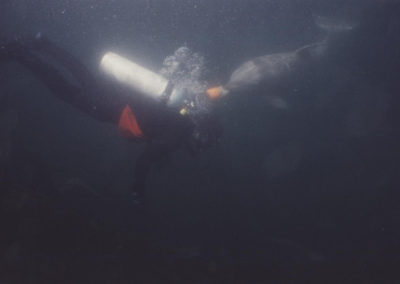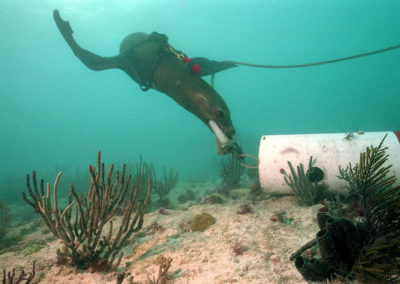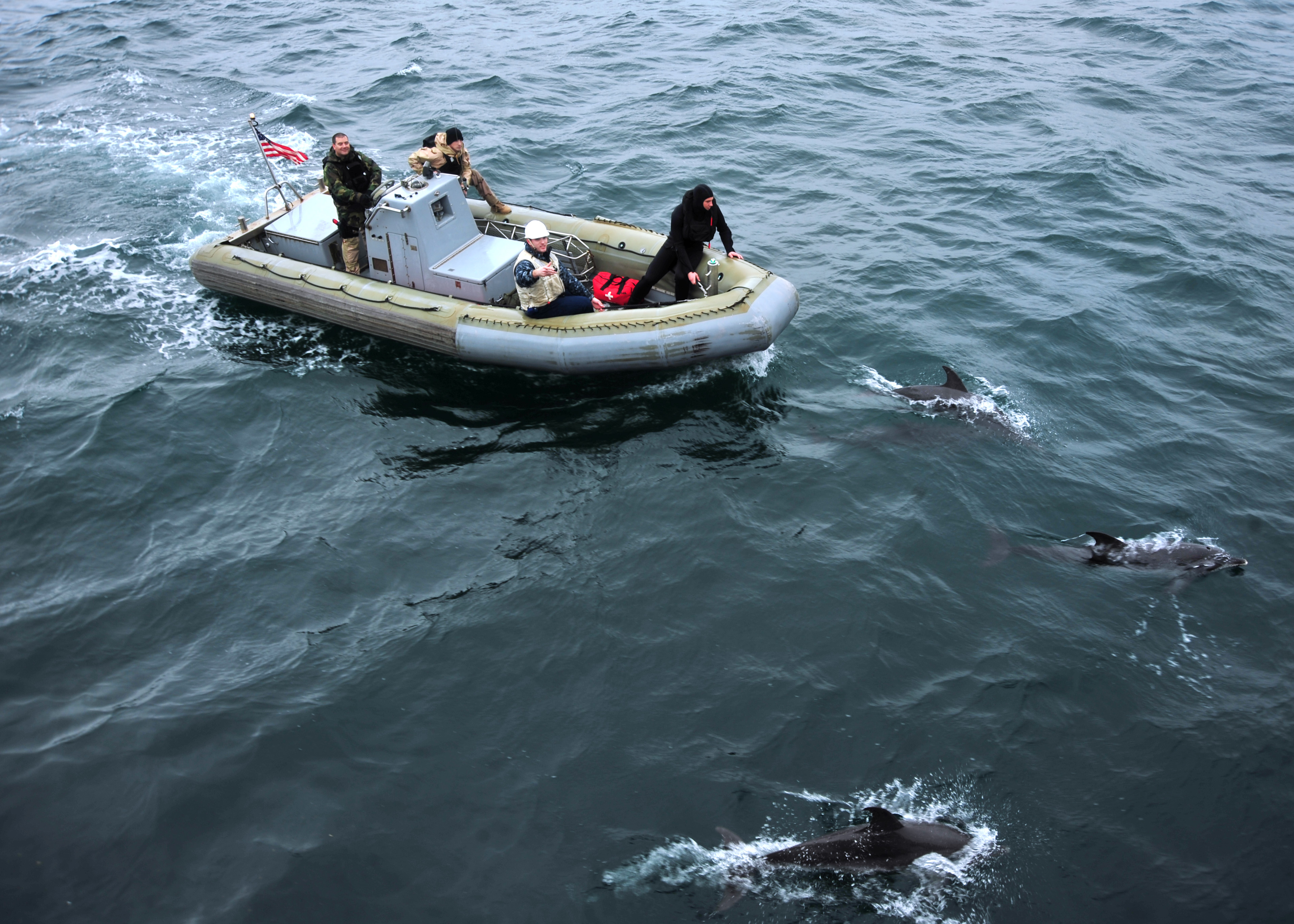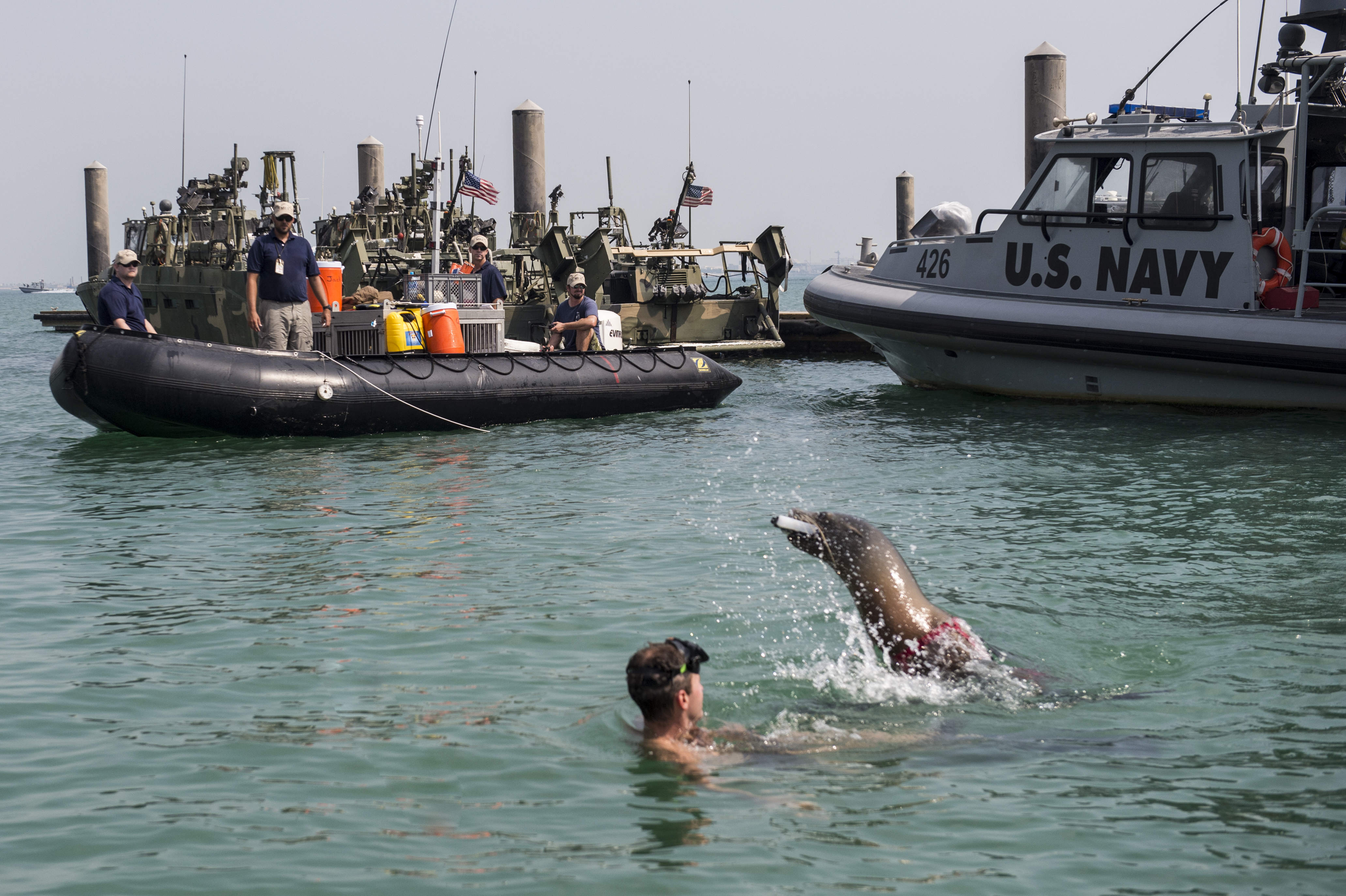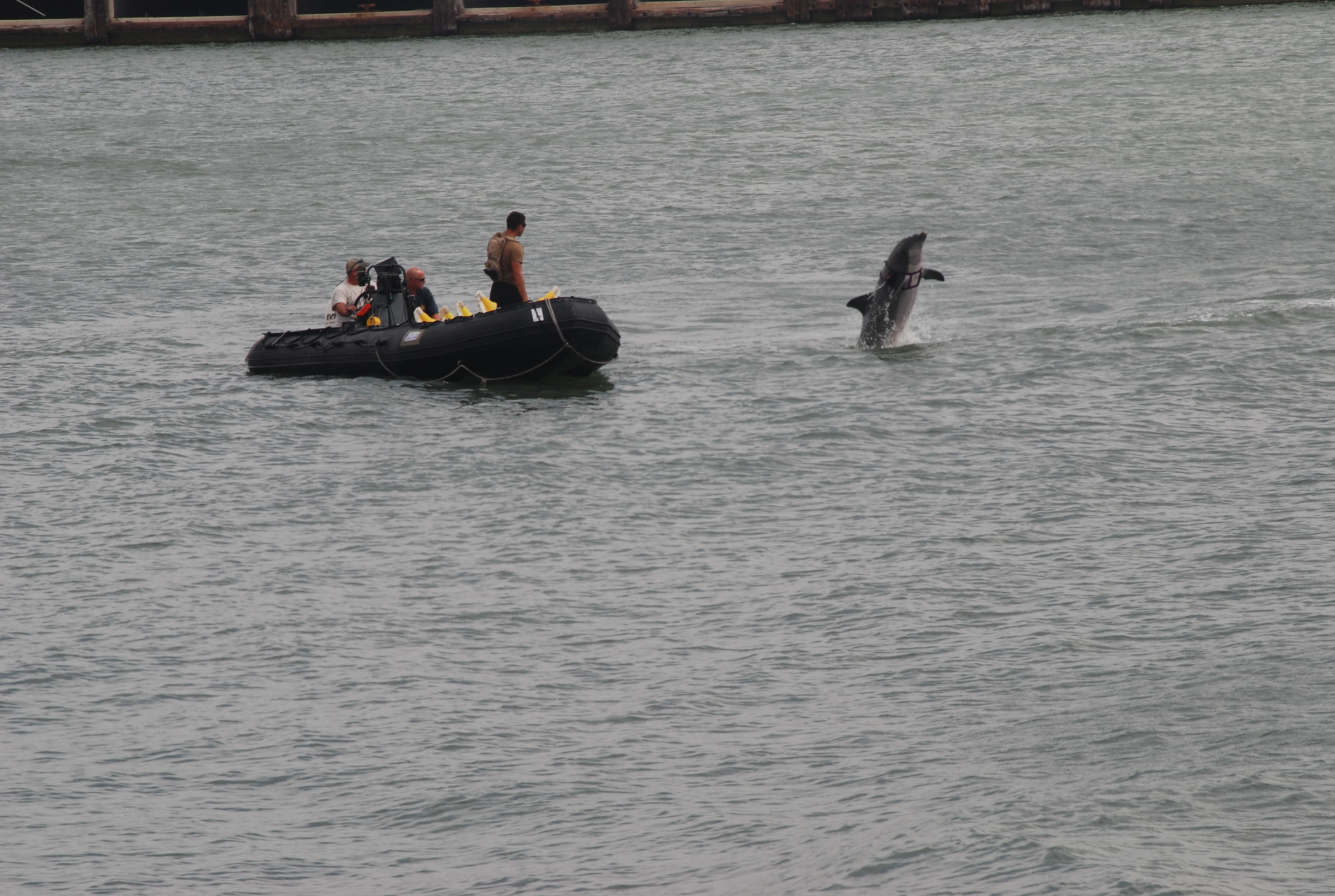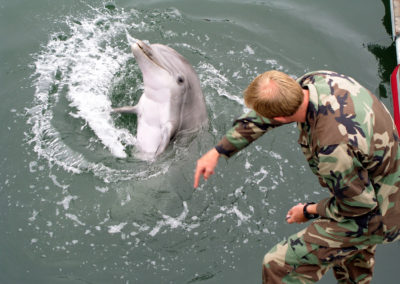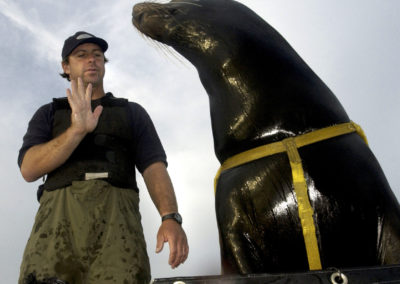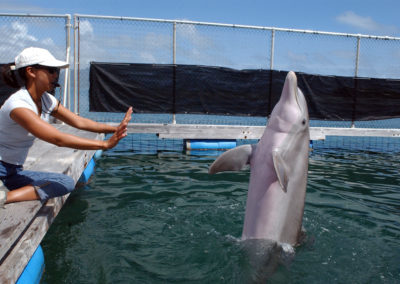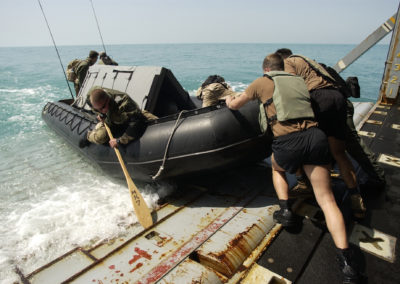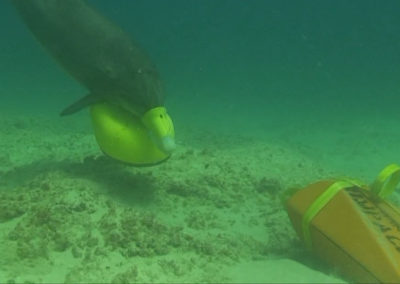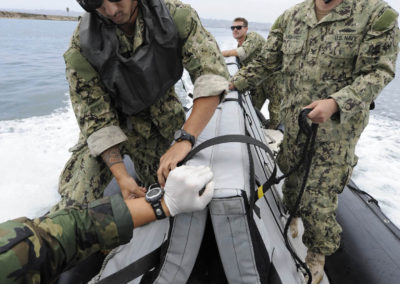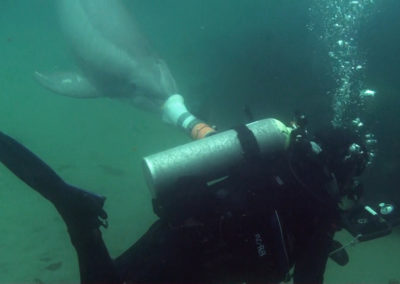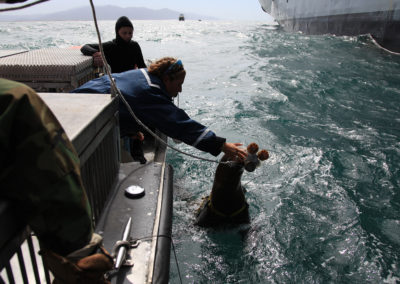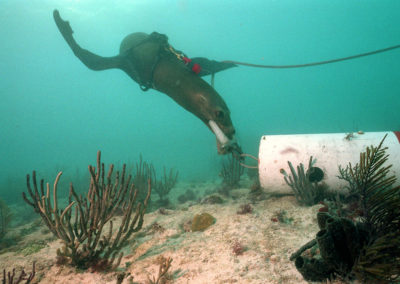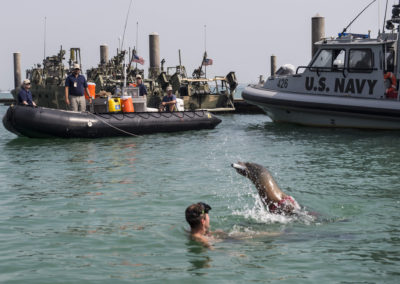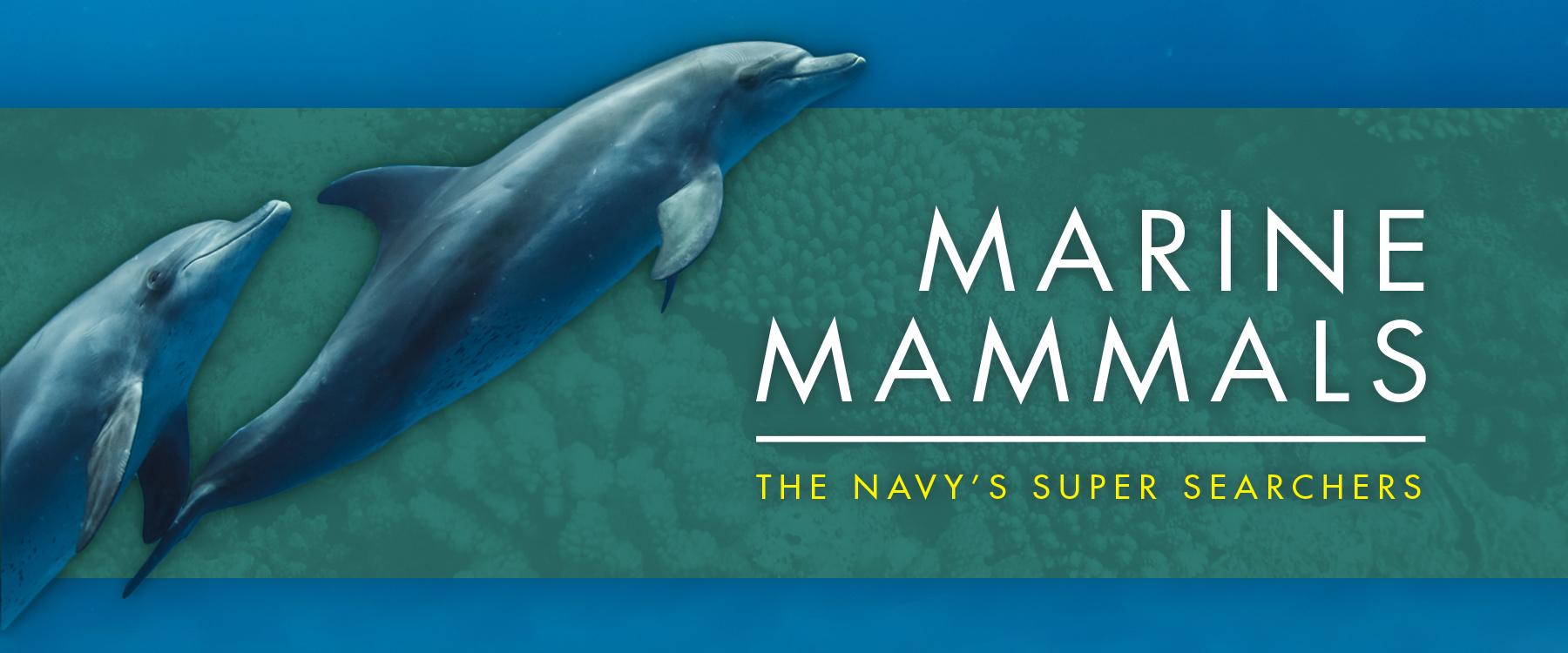
MARINE MAMMALS MISSIONS
Navy animals learn missions from animal trainers and perform missions with handlers. Marine mammals and handlers travel all over the world. They carry out three kinds of missions:
 How are the mine detection and object recovery missions different?
How are the mine detection and object recovery missions different?
Mine-detecting dolphins find unexploded mines that emit no signals. Dolphins use their powerful biological sonar to discover these hard-to-find mines.
Sea lions locate test equipment outfitted with noise-making pingers. Sea lions find these objects using their excellent hearing and eyesight.
How Do Missions Work?
In a typical operation, an animal and 2–3 handlers travel to a search area in a small boat. At the handler’s command, the dolphin or sea lion dives into the water and searches using its detection senses.
Animals signal their findings by touching two paddles placed on the boat’s side. They tap the front paddle to indicate a find or the back paddle to indicate no find.
When an animal makes a discovery, it dives again to fasten a marker or recovery line to the object or intruder for retrieval by human divers or explosives experts.
 How do trainers and handlers communicate with marine mammals?
How do trainers and handlers communicate with marine mammals?
Above water, they speak voice commands or gesture with hand signals. When the animals are underwater, trainers and handlers play audible tones the animals associate with commands.
Mission #1: Mine Detection
Dolphins Only
Unexploded mines can inflict great damage to ships, even decades after being laid, but are difficult to detect using sonar technology. Dolphins have biological sonar that detects mines faster and better than sonar invented by humans.
Although most mines still contain explosives, they pose little danger to dolphins. Mines detonate by sensing the magnetic presence (disturbance) of steel ships. Marine animals cannot trigger them.
Mine-hunting dolphins can find mines tethered to the seafloor, resting on the bottom, or fully buried in sediment. The animals drop marker buoys near found mines for human divers to recover and disable.
Mission #2: Intruder Defense
Dolphins and Sea Lions
Like security dogs, marine mammals can detect trespassers sneaking into forbidden areas. The Navy’s dolphins and sea lions guard underwater areas like piers, harbors, and ship channels against intruders. They patrol the waters looking for divers and undersea vehicles that could plant weapons or spy on Navy bases.
Dolphins and sea lions swim swiftly and stealthily compared to human divers. A marine mammal can identify and tag an enemy swimmer before the person realizes the animal is even there.
Marine mammals cannot tell the difference between friendly and enemy divers. They are trained to detect any swimmers in an area.
Mission #3: Object Recovery
Sea Lions Only
The Navy’s sea lions find practice mines and targets that ships and aircraft test in the ocean. Recovering test equipment saves money and allows reuse. Sea lions work faster and safer than human divers or undersea vehicles.
Training mines and targets contain tracking pingers. Sea lions search by listening for tones the pingers produce. Once near a target, sea lions use their low-light vision to pinpoint the object’s location.
When a sea lion finds a mine or target, it snaps a recovery line onto an attachment point on the object. Human handlers lift the object to the surface using a winch aboard the boat.
Marine Mammals in Combat
Navy dolphins and sea lions have taken part in notable conflicts during the program’s history:
1970–1971: Vietnam War
Dolphins and sea lions guarded harbors and ships.
1986–1987: Iran-Iraq War
Dolphins protected the command ship USS LaSalle (AGF 3) in the Persian Gulf.
2001–2003: Operation Noble Eagle
Dolphins patrolled waters outside U.S. military installations and other potential terrorist targets.
2003–2005: Operations Enduring Freedom and Iraqi Freedom
Dolphins and sea lions safeguarded ships by searching for enemy swimmers and mines.


